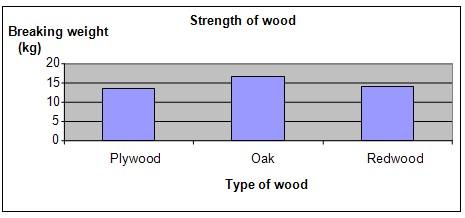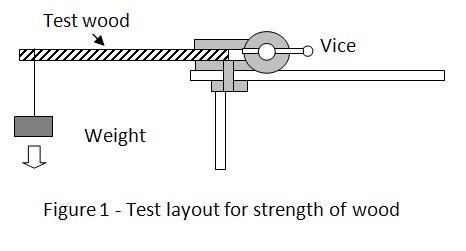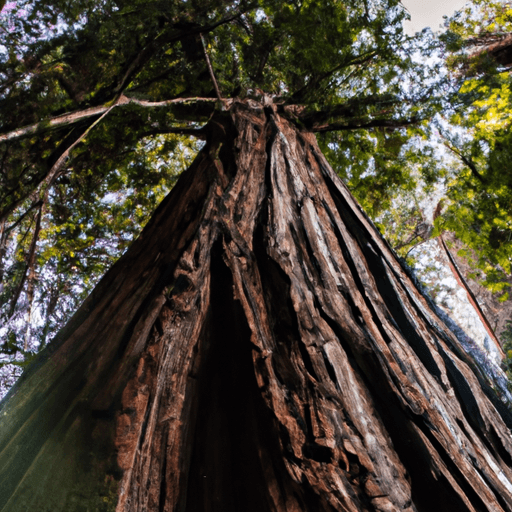| Complexity level: | 7 |
| Project cost ($): | 70 |
| Time required: | 1 hour to prepare, 6 hours for observation |
| Material availability: | Easily found |
| Safety concerns: | Ensure that safety equipment (gloves/goggles) are worn when handling power tools. Tools should be handled only by an adult |
Hypothesis
The solid wood will be stronger than the plywood.
Overview
Tyes of Wood
There are basically 3 types of wood used by woodworkers – hardwood, softwood and plywood. Regardless of type, hardwoods and softwoods are solid woods, with pieces cut directly from lumber (felled trees). Plywood on the other hand is engineered wood which is produced by binding many thin layers of wood with glue and pressing them together at high temperatures.
Solid woods are normally favored over plywood because of their appearance. When solid wood is used in building the interiors of houses or for furnishings, it gives the home a lively and warm feeling. Applying varnish or other forms of finish coatings helps to enhance its appearance. Solid woods also do not decay or disintegrate as fast as plywood when exposed to water. However, because of these advantages solid woods are very expensive.
Plywood is very strong because of the way in which it is engineered, even though it may not look as attractive as solid woods. The layers of the plywood can be seen at the sides, in cross-section. They are quite resistant to warping, bending and cracking. Plywood also does not expand and shrink like solid woods when the humidity changes.
Scientific Terms
Materials
The materials required for this science fair project:
- 4 oak wood planks (proposed size 100mm x 25mm x 500mm)
- 4 redwood planks (proposed size 100mm x 25mm x 500mm)
- 4 plywood planks (proposed size 100mm x 25mm x 500mm)
- You can purchase the wood from a hardware/home improvement store (eg. Lowes or Home Depot)
- 40 weights, each 0.5 kg
- 1 rope, about 2 meters in length
- 1 electric drill with appropriate size drill bits
- 1 ruler
- 1 vice
- 1 solid table
Procedure
1. For this science fair project, the independent variable is the type of wood used for testing – oak wood, redwood or plywood. The dependent variable is the average strength of the wood. This is determined by applying weights and noting the breaking point of each wooden plank. The constants (control variables) are the size of the wooden planks and the position where the weight is applied.
2. The experiment is begun by inspecting the dimensions of the wooden planks and ensuring that all of them are of the same size.
3. A hole is drilled in each of the 12 planks to be tested. The position of the hole is 30mm from one end of the plank, and in the center of the plank’s width ( 50mm from each side).
4. The vice is fixed to the table. One of the oak wood planks is fixed to the vice by the end without the hole, as shown in Figure 1 below. The string is tied to the hole in the other end of the plank. The weights are added, 0.5kg at a time, to the string until the wooden plank snaps. The test is repeated with the remaining 3 oak planks. The average breaking weight of the 4 planks is calculated and recorded in the table given below.
5. Step 4 is repeated using the redwood and plywood planks. The average breaking weights are calculated and recorded in the table given below.



Results
It is observed that oak , which is a hardwood, could bear the most weight before breaking; while the plywood could bear the least before breaking.
| Wood tested | Type | Breaking weight (kg) |
| Plywood | Engineered wood | 13.5 |
| Oak | Hardwood | 16.5 |
| Redwood | Softwood | 14 |
The graph below represents the results of our science experiment.

Conclusion
The hypothesis that the solid wood will be stronger than the plywood is proven to be true.
Solid wood furniture looks nicer and lasts longer but is more expensive. Another problem with solid wood is that their sizes are limited by the size of the trees. This means more joints are required for larger projects. Plywood on the other hand can be bought at a fraction of the cost of solid wood. It can also be manufactured to larger sizes, making it more convenient to be used in woodworking projects.
Also consider
What would happen if the science fair project were to be repeated to include oriented strand board (OSB) and fiberboard?
Try repeating the experiment using different widths of wooden planks to compare the results.
References
Types of wood - http://www.sawdustmaking.com/Wood/wood.html
What is plywood? - http://www.wisegeek.com/what-is-plywood.htm

